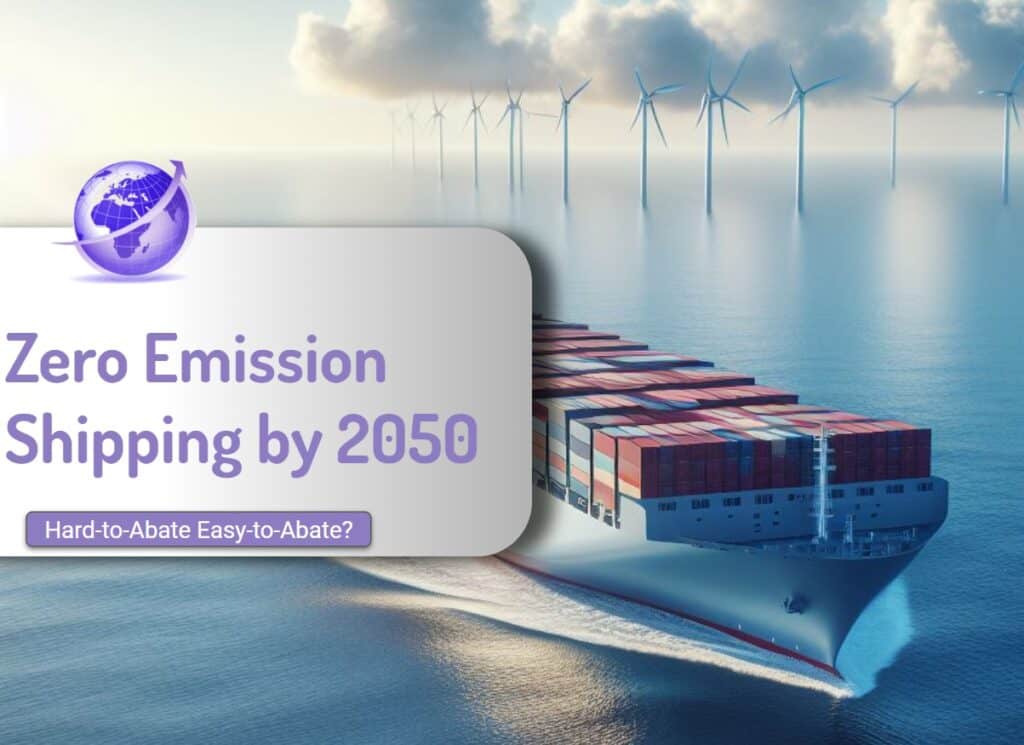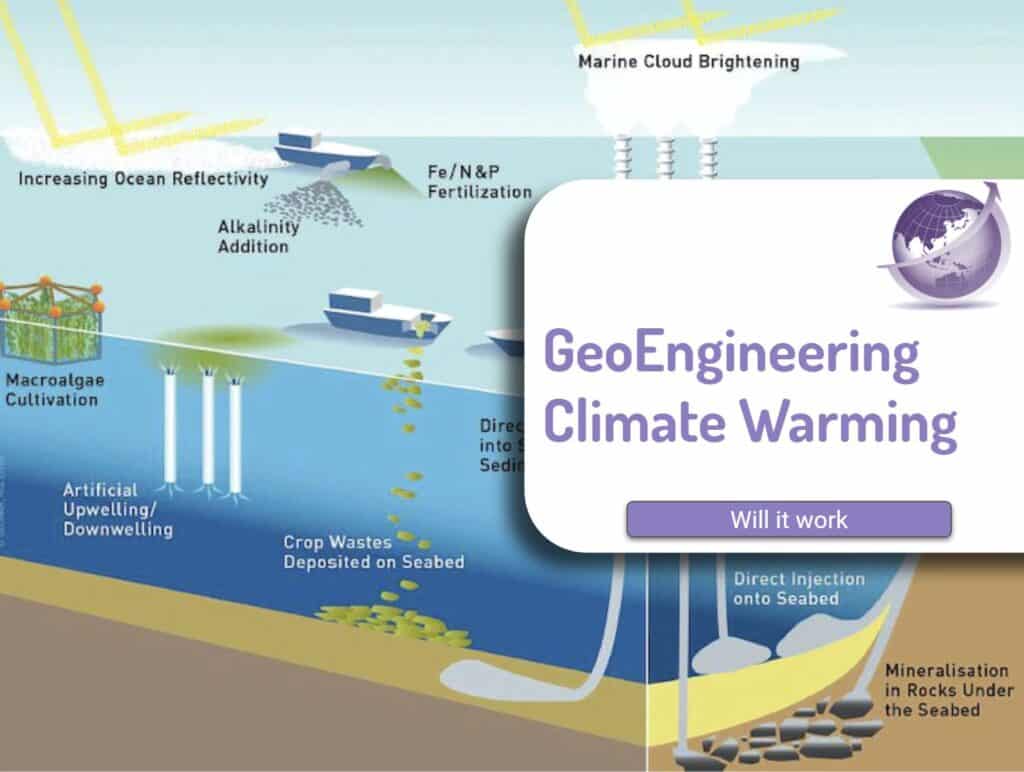The shipping industry signed an agreement in July 2023 to transform to zero emissions for shipping by 2050. How can an industry that is often described as an open garbage sewer in the ocean (such as cruise liners) or some of the worse polluters of CO2 can turn around an industry that is supposedly hard-to-abate turn to easy-to-abate?
The shipping industry was omitted from emissions reduction at the Paris Climate Accord in 2015 as it was considered hard-to-abate, and there were no clear technologies to achieve zero emissions. However the industry firstly agreed to 50% emissions but has now committed to get to zero emissions, as EU has introduced very stringent legislation. Moreover, solutions are available and climate change has led to renewed emphasis.
Whats clear is that any solution will add cost to large shipping.
How to Get to Zero Ship Emissions by 2050
Aside from the other initiatives (listed below) the difficult to abate obstacles are large ocean going ships. All options will increase fuel costs from the current “resid” fuel. Viable solutions at this stage include:
- Electrification for inshore and ferries
- Change bunker fuel or LNG for biofuel /biodiesel
- Hydrogen derivatives if sourced with green hydrogen
- Ammonia
- Methanol. Many ships on order. Fuel is easy to handle, well understood.
- Nuclear is proposed by some because it is super dense and can operate for most of a ships life. Can be more efficient that diesel. While used for military use, civilian use is fraught with social and technical challenges.
Target to achieve zero emissions 5% to 10% propulsion by 2030, and it may be that a levy on all ships will have pave the way with new technology. The major source is green hydrogen and all that entails.
Methanol
Known substance but has to come from a carbon free source.
Ammonia
Carrier for H2, and no carbon emissions. Cost comparison with methanol is favourable but engines are getting to operable. Needs improvement as well as regulation for safety. It is highly flammable, toxic and highly corrosive. Already a commodity. Could be drop in for diesel. Creates NOX. Not as energy dense so needs 2x storage, so will need more refueling or larger tanks.

Are Methanol and Ammonia Greenwashing?
Michael Barnard is very scathing of methanol and ammonia and does not view these as viable options. In detail he looks at the pathways for both methanol and ammonia and comes to a conclusion biodiesel is the only product that does not increase emissions.
| Diesel | Methanol | Ammonia | |
|---|---|---|---|
| Tonnes CO2e per Tonne fuel | 3.1 | 4.0 | 7.3 |
| Adjusted for energy density | 3.1 | 8.9 | 17.4 |
| Ratio | 1 | 2.9 | 5.6 |
Scope of Shipping Emissions
Global shipping emissions represented 1,076 million tonnes of CO2, and were responsible for around 2.9% of global emissions caused by human activities (EU 2018 data). Projections show that these emissions could increase by up to 130% of 2008 emissions by 2050.
In July 2023 the International Maritime Organisation (IMO) made a step on this path committing to new targets for GHG emissions reductions and to develop and adopt in 2025 a basket of measure(s), delivering on these reduction targets.
Shipping Industry Characteristics
Shipping is very much a family dynasty business, and has grown along with civilizations. Propulsion has gone from human-powered to wind, to coal, and to oil.
- Oil tankers – 11,565
- Bulk carriers – 12,714
- General cargo – 20,112
- Container ships – 5,589
- Other types of ships – 52,919

Doing Nothing – EU Carbon Tax
The EU has put in place a “carbon tax”. In practice, shipping companies have to purchase and surrender (use) EU ETS emission allowances for each tonne of reported CO2 (or CO2 equivalent) emissions in the scope of the EU ETS system. It is the role of administering authorities of EU Member States to ensure compliance using similar rules as for the other ETS sectors.
In January 2024, the EU’s Emissions Trading System (EU ETS) will be extended to cover CO2 emissions from all large ships (of 5,000 gross tonnage and above) entering EU ports, regardless of the flag they fly.
The system covers:
- 50% of emissions from voyages starting or ending outside of the EU (allowing the third country to decide on appropriate action for the remaining share of emissions);
- 100% of emissions that occur between two EU ports and when ships are within EU ports.
- The EU ETS covers CO2 (carbon dioxide), CH4 (methane) and N2O (nitrous oxide) emissions, but the two latter only as from 2026.
- To ensure a smooth transition, shipping companies only have to surrender allowances for a portion of their emissions during an initial phase-in period:
- 2025: for 40% of their emissions reported in 2024;
- 2026: for 70% of their emissions reported in 2025;
- 2027 onwards: for 100% of their reported emissions.
Read more here.
Update March 2024
CNBC reported the International Maritime Organization held its latest round of negotiations to discuss how to move forward on the climate regulation of the shipping industry. They suggest growing support for the world’s first-ever global emissions levy meant it was now more likely to be adopted by the IMO next year.
If adopted, there will be a long introduction period, based on the vested interests.
Podcast For More Information
Listen to an interview with Joannah Christensen, CEO of the Global Maritime Forum, a not-for-profit on how the shipping industry has committed to zero emissions by 2050 on Cleaning Up Podcast Ep143
Other Shipping Initiatives
1. 40% Reduction of Fossil Fuel Shipping
Over 40% of shipping tonnage is the transport of coal, gas and oil. Electrification of the energy and transport sector will reduce tonnage by 45% by many estimates. (article Ship Emissions Halve)
2. Electrify Ports
Electrifying ports will reduce emissions – port handling of containers, loaders, tug boats, trucks and transport will make a very significant reduction in associated emissions (see Electric container ports)
3. Electrify Ferries
Norway has led the change from diesel / electric to fully electric, and many cities around the world are looking to electrify passenger ferries
4. Electrify Inshore Shipping
Some of the largest inshore shipping companies are building electric ships, using container sized batteries that can be swapped out and recharged on shore (See article Electric Boats)
5. Cruise Liners
New cruise liners could be electric, but many of the 800 ports the ships rock up to would need to have ship to shore electricity. Many cruise ports don’t have onshore electric connections but this would be a simple implementation globally. Little effort has been made to date.
More Reading / Information
- The IMO’s new strategy on reducing greenhouse gas emissions in shipping: https://wwwcdn.imo.org/localresources/en/OurWork/Environment/Documents/annex/MEPC%2080/Annex%2015.pdf
- Cleaning Up Podcast https://www.cleaningup.live/is-shipping-the-easiest-hard-to-abate-sector-ep143-johannah-christensen/
- European Carbon Abatement – Reducing emissions from the shipping sector https://climate.ec.europa.eu/eu-action/transport/reducing-emissions-shipping-sector_en
- CleanTechnica Methanol & Ammonia Tell A Good Shipping Fuel Story, But Stop Before The Tragic Finale https://cleantechnica.com/2023/06/12/methanol-ammonia-tell-a-good-shipping-fuel-story-but-stop-before-the-tragic-finale/
- CleanTechnica Maersk Green Methanol Plans Won’t Decarbonize Methanol Much https://cleantechnica.com/2023/10/13/maersk-green-methanol-plans-wont-decarbonize-methanol-much/
- World’s first-ever global emissions tax takes a step closer to reality https://www.cnbc.com/2024/03/22/worlds-first-ever-global-emissions-tax-takes-a-step-closer-to-reality.html









